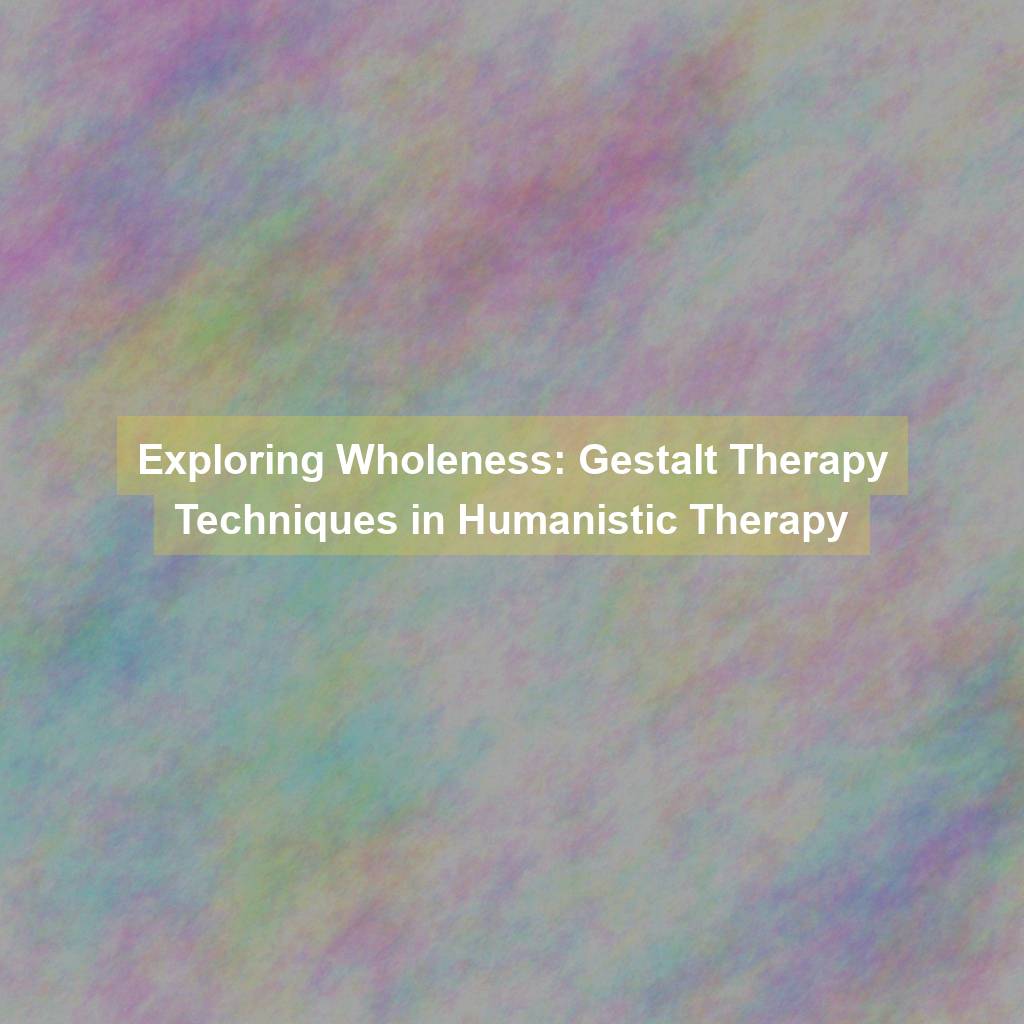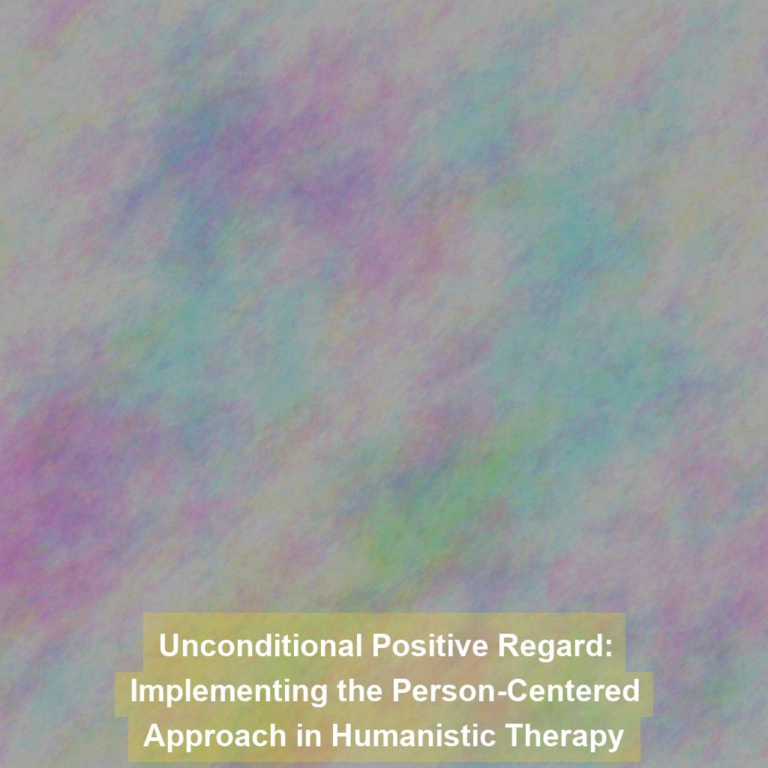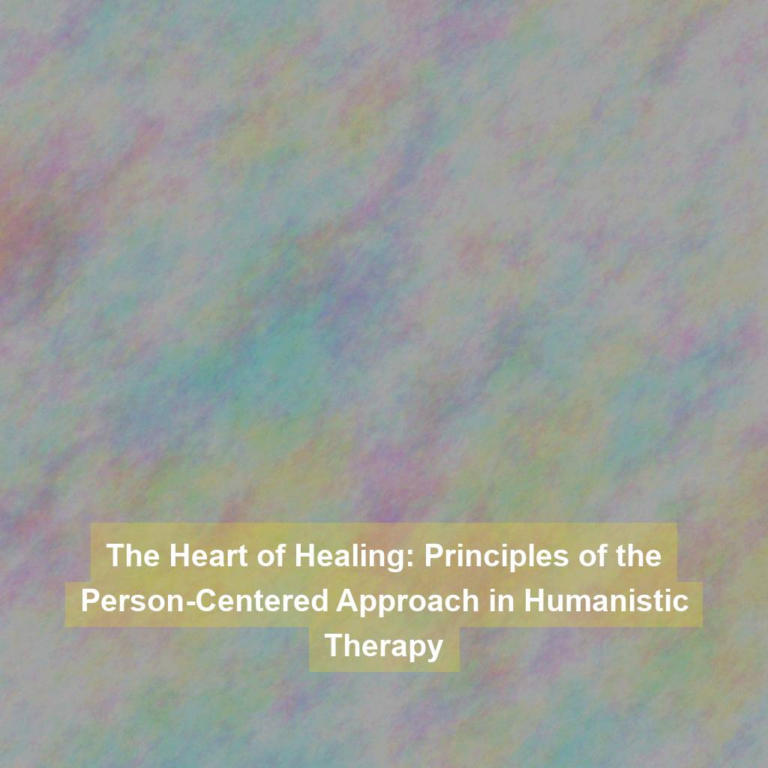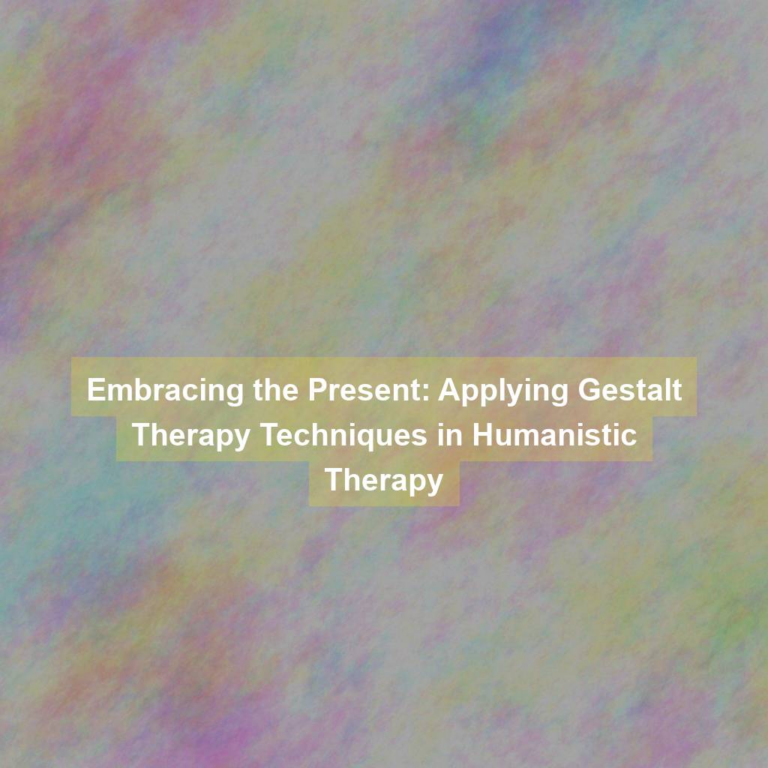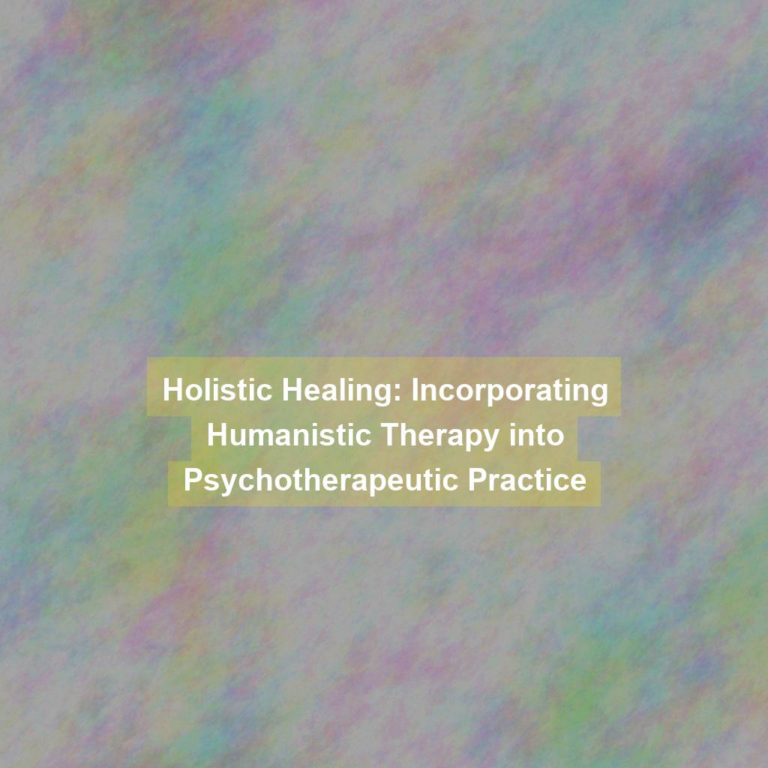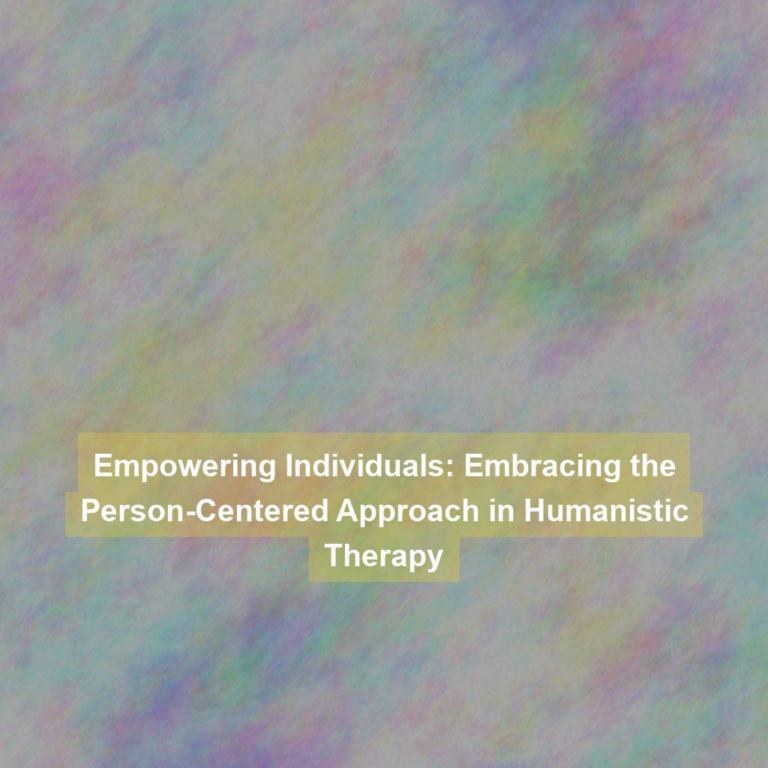Have you ever considered how Gestalt therapy techniques can contribute to the holistic approach of humanistic therapy?
The integration of Gestalt therapy techniques into humanistic therapy has sparked interest and debate among mental health professionals.
As you delve into the exploration of wholeness through the lens of Gestalt techniques within humanistic therapy, you will uncover insightful ways in which these approaches complement each other to support clients in their journey towards self-awareness and personal growth.
The Foundation of Gestalt Therapy
Gestalt therapy, as a humanistic approach to psychology, emphasizes the importance of the present moment and the individual’s experiences and perceptions. This foundation forms the core of Gestalt therapy techniques, focusing on the here and now rather than delving into past experiences. In this approach, the therapist guides you to pay attention to your current thoughts, feelings, and behaviors, helping you become more self-aware and present. By doing so, you can gain insight into your patterns of relating to others and the world around you.
In Gestalt therapy, the emphasis is on personal responsibility and empowerment. You’re encouraged to take ownership of your thoughts and actions, recognizing that you have the power to make choices and affect change in your life. Through this process, you can develop a deeper understanding of yourself and your experiences, leading to personal growth and self-acceptance.
Furthermore, Gestalt therapy techniques often involve experiential exercises and experiments that bring awareness to your present experience. These may include role-playing, guided imagery, and other interactive methods aimed at helping you gain insight into your emotions and behaviors. By actively engaging in these techniques, you can work towards integrating conflicting aspects of yourself and achieving a sense of wholeness and authenticity.
Key Gestalt Therapy Techniques
Transitioning from the foundation of Gestalt therapy, you can now explore the key techniques used in this humanistic approach to therapy.
One of the central techniques in Gestalt therapy is the ’empty chair’ technique. This method involves the client speaking to an empty chair as if someone significant to them is sitting in it. By doing so, the client can express unspoken emotions and confront unresolved conflicts.
Another important technique is the ‘exaggeration’ technique, where clients are encouraged to amplify their gestures, expressions, or feelings. This helps bring unconscious patterns to the forefront, allowing for deeper exploration and awareness.
Additionally, the ‘reversal’ technique is used to help clients gain a new perspective by experiencing situations from different angles or viewpoints.
Furthermore, the ‘staying with the feeling’ technique encourages clients to fully immerse themselves in their emotions, allowing for a deeper understanding and acceptance of their internal experiences.
These techniques, among others, are fundamental in Gestalt therapy, as they aim to promote self-awareness, emotional expression, and personal growth in the therapeutic process.
Integration With Humanistic Therapy
Upon integrating Gestalt therapy techniques with humanistic therapy, practitioners aim to enhance your self-awareness and promote holistic personal growth. This integration emphasizes the importance of the present moment and the client-therapist relationship, focusing on the here and now experiences and the client’s phenomenological awareness. By incorporating Gestalt techniques such as the empty chair, role-playing, and the two-chair technique, therapists encourage you to explore unresolved issues, gain insight into conflicting emotions, and integrate fragmented aspects of yourself.
This approach aligns with humanistic therapy’s core principles of empathy, genuineness, and unconditional positive regard, fostering a supportive and non-judgmental therapeutic environment for your exploration and self-discovery. Through this integrated approach, you’re encouraged to take responsibility for your thoughts, feelings, and behaviors, empowering you to make choices that align with your authentic self.
The synergy between Gestalt and humanistic therapy offers you a holistic framework for personal growth, integrating mind, body, and spirit to support your journey towards wholeness.
Applying Gestalt Techniques in Practice
To apply Gestalt techniques in practice, therapists engage clients in experiential exercises that promote self-awareness and exploration of unresolved issues. One technique often used is the ’empty chair’ exercise, where clients have an imaginary dialogue with a person or part of themselves, allowing for the expression of unspoken feelings and conflicts. This exercise can lead to increased self-understanding and insight into internal conflicts.
Another technique is the ‘topdog-underdog’ dialogue, where clients explore the conflicting parts of themselves, such as their inner critic and their vulnerable self. By verbally expressing these conflicting aspects, clients can gain awareness of their internal struggles and begin to integrate these parts of themselves.
Additionally, therapists may use the ‘body awareness’ technique, where clients are guided to focus on bodily sensations, emotions, and posture to become more present in the moment and gain insight into their emotional experiences. These experiential exercises help clients become more aware of their thoughts, feelings, and behaviors, ultimately leading to greater self-understanding and personal growth.
Advancing Wholeness and Growth
As you advance towards wholeness and growth, incorporating Gestalt techniques into your therapeutic practice can empower clients to deepen their self-awareness and integrate conflicting aspects of themselves. Gestalt therapy focuses on the present moment and the client’s experience, encouraging them to become more aware of their thoughts, feelings, and behaviors. By using techniques such as ‘the empty chair’ or ‘the two-chair technique,’ clients can explore and reconcile internal conflicts, leading to a greater sense of integration and self-acceptance.
Additionally, Gestalt therapy emphasizes personal responsibility and encourages clients to take ownership of their thoughts and actions. This approach can help clients develop a greater sense of agency and empowerment, leading to personal growth and wholeness. Through the use of techniques like ‘the exaggeration exercise’ or ‘reversal technique,’ clients can gain insight into their patterns of behavior and explore new ways of being in the world.
Ultimately, by incorporating Gestalt techniques into your therapeutic practice, you can create a supportive and empowering environment for clients to explore their inner worlds, integrate conflicting aspects of themselves, and move towards greater wholeness and growth.
Conclusion
So, as you can see, integrating Gestalt therapy techniques into humanistic therapy can greatly enhance the process of exploring wholeness and promoting growth in clients.
By utilizing key techniques such as the empty chair, the two-chair technique, and focusing on the present moment, therapists can help clients gain a deeper understanding of themselves and their experiences.
This approach ultimately fosters a more holistic and transformative therapeutic experience for clients seeking personal development and healing.

